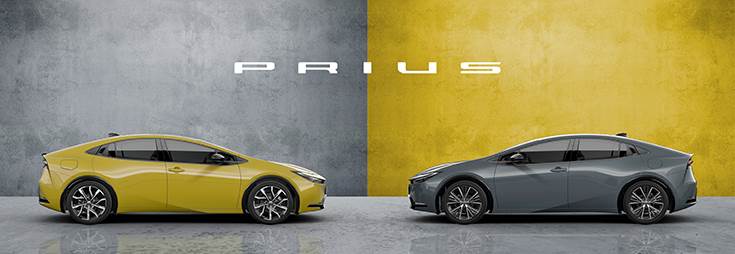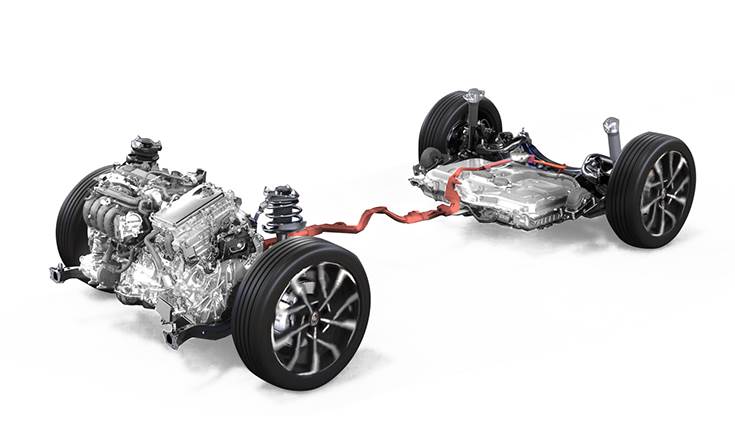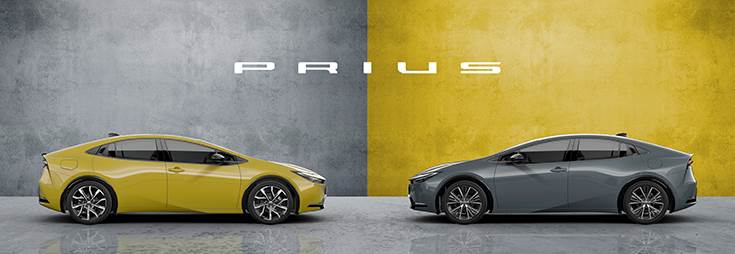Twenty-five years after it revealed the iconic Prius hybrid sedan, Toyota has taken the covers off the fifth-generation model, with Series Parallel Hybrid (HEV) models to launch by end-December 2022 and Plug-in Hybrid (PHEV) models to launch in spring 2023.
The Prius was first launched in 1997 as the world’s first mass-produced hybrid car. The model’s second generation introduced the Prius’ distinctive monoform silhouette for the first time and delivered even better fuel efficiency with the inclusion of an evolved Series Parallel Hybrid System (THSII).
 The third-generation Prius introduced a larger-capacity 1.8-litre engine and more efficient hybrid system to not only enhance fuel efficiency but driving performance as well. With the fourth generation, the Prius used the Toyota New Global Architecture (TNGA) platform for the first time to deliver improved environmental performance and an evolved driving experience.
The third-generation Prius introduced a larger-capacity 1.8-litre engine and more efficient hybrid system to not only enhance fuel efficiency but driving performance as well. With the fourth generation, the Prius used the Toyota New Global Architecture (TNGA) platform for the first time to deliver improved environmental performance and an evolved driving experience.
The Prius, which means ‘to go before’ in Latin, has led the expansion of HEVs over the 25 years since it was first launched as a new-generation eco-car with outstanding fuel efficiency. Total cumulative sales of the Prius worldwide have reached about 5.05 million units, accounting for a reduction equivalent to at least about 82 million tons of CO2 emissions as of March 2022. While the hybrid system had its start with the Prius, almost every model these days, from compact cars to SUVs, minivans, and commercial vehicles, has a hybrid version.
Hybrid Reborn
Toyota has billed the latest Prius as the Hybrid Reborn concept. The company says the development team decided to start from scratch and look at what the Prius needs to remain popular for the next 25 years. Following Japan, the new Prius will be launched in North America, Europe, and other countries around the world.

Since the launch of the Prius in 1997, Toyota has sold a total of 20.3 million hybrids globally, helping reduce CO2 emissions by 162 million tons.
The fifth-gen Prius inherits the signature monoform silhouette of the original Prius and has even more stylish proportions through a low centre of gravity and large-diameter 19-inch wheels on the second-generation TNGA platform. The front hammerhead shark-like design achieves a high level of balance between functionality and styling, while the rear design offers rear combination taillights extending horizontally to the left and right.
The ‘island architecture’ concept achieves a spacious interior, which comes with black tones throughout and coordinated instrument panel and seat stitching finishes. The instrument panel uses Toyota’s first illuminated warning system. In addition to providing an ambient light that highlights the interior, this new Toyota Safety Sense-linked feature is incorporated into the styling. It alerts the driver to detected objects through flashing lights before the audible warnings to create a more reassuring driving experience.
2.0L Plug-in Hybrid, 2.0-/ 1.8L Series Parallel Hybrid System
The new Prius is powered by Toyota’s first 2.0-litre Plug-in Hybrid System claimed to deliver much-improved acceleration and quietness. The combination of a high-efficiency Dynamic Force Engine and lithium-ion batteries for high output drive achieve maximum system output of 164 kW (223 PS) while maintaining the same level of fuel efficiency as the previous model. The sprint from 0-100kph takes 6.7 seconds.
EV driving range is about 50% higher than the previous model. This means that, with improved battery performance, the new Prius can operate on EV mode alone for most daily drives. It also comes with a ‘My Room Mode’ that lets users enjoy air conditioning and audio systems from the external power source by turning the power switch on during charging, making the interior space even more comfortable.
With the PHEV, the battery pack is located under the rear seat instead of in the cargo area, giving the new Prius a lower centre of gravity and increased cargo capacity. Together, these features deliver a balance between sporty driving performance and improved ease of use.
This version of the new Prius employs the latest Series Parallel Hybrid System. According to Toyota, “It offers satisfying acceleration and responsive driving in a car that reacts as expected while maintaining the same level of fuel efficiency as the previous model. Maximum system output is 144 kW (193 PS) for the 2.0-litre version, which is 1.6 times higher than the previous model. Second-generation TNGA platform
Second-generation TNGA platform
The second-generation TNGA platform was developed as an ongoing improvement of the matured TNGA platform to achieve the exhilarating styling and driving performance of the new Prius, allowing for a lower center of gravity and large-diameter tires.
Additional reinforcement throughout the body has increased rigidity and improved quietness. Using MacPherson struts at the front and a double wishbone setup at the rear, the suspension system provides stability for straight-line driving, responsiveness that meets driver intentions in corners, and easy line-tracing ability. Combined with the latest powertrains, it delivers a captivating driving performance.
High on safety
Like all Toyotas, the latest Prius packs the most advanced safety and driving support systems in the Toyota Safety Sense active safety package. The range of detectable objects has been expanded even further.

The new Prius comes with Advanced Park (with remote function), an advanced driving support system. It enables easy automatic parking and exiting from parking spaces in a variety of parking situations, and with operation outside the car via a dedicated smartphone app, the car can also enter and exit parking spaces remotely.
The new Prius is equipped with a Toyota Safety Sense monocular camera at the front, a rear-facing camera for the Digital Inner Mirror, and an in-vehicle drive recorder. This setup has a clean appearance without a sense of the cameras and wires being retrofitted. The data is stored on the ECU to avoid data corruption and other issues associated with SD cards and properly manage important camera data.
This model is equipped with two 100 VAC / 1,500 W accessory power outlets; one at the back of the center console and one in the cargo space. Users can select the BEV external power supply mode, which uses power from the battery only without having to start the engine, or the HEV external power supply mode, which recharges the battery from the engine if the remaining power is too low. It also comes with an external electric power supply attachment as standard so that external power supply is possible with the door windows closed to prevent rain and insects from getting in the car when in use.
